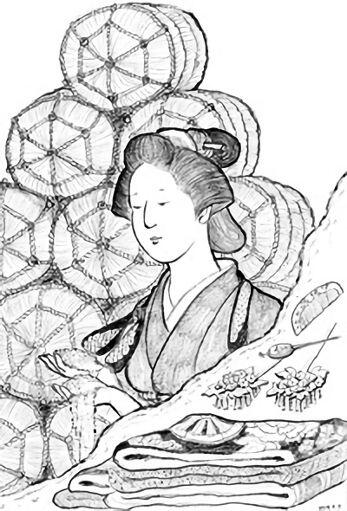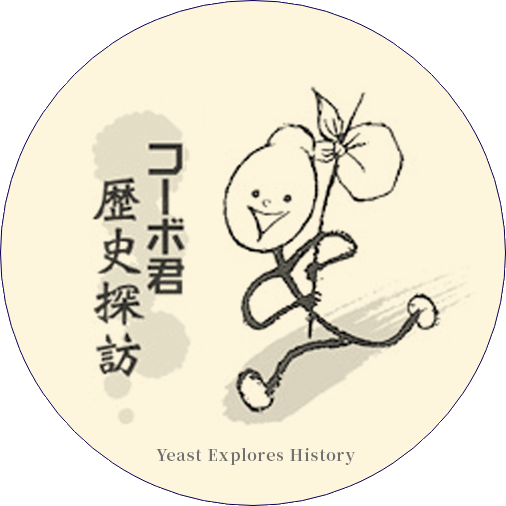| Yeast |
“Hey, what are you doing?” |
| Old Well |
“I’m being cleaned! All the joy and sadness of the world slowly passes through the soil and then is purified by me so that it becomes beautifully transparent. Even when my water is pumped up until the bottom can be seen, the next day I’m full as before, even to overflowing! That’s how it should be. Today we’ll start with the Boshin War. In the first year of Meiji (1868), Nihonmatsu became a battle field in the Boshin War. When the Choshu army advanced and the war came close, the citizens were forced to make a woeful escape via the Shiozawa Road to Yonezawa in Yamagata, which was an ally of Nihonmatsu. When Nihonmatsu ran out of reinforcements, finally the Nihonmatsu Youth Corps, which consisted of teenage boys, was sent to the front, but after two days Nihonmatsu Castle fell.” |
| Yeast |
“That must have been terrible. Was Daishichi alright?” |
|
 |
| Old Well |
“Daishichi was left with vivid scars. On the door of the brewery the words ‘Seized by the Toki army’ were cut with a knife, a graphic proof of the atrocious plundering and looting that took place. The Ohta family has the portraits of all family heads and their wives, except the 5th Generation. The 5th Generation, Choji, died before his father, at the young age of 35. His wife Mitsu also died 4 years later, following her husband in the grave, and leaving their children behind. War damage was also terrible at the main house, which from that time on stopped brewing sake.” |
| Yeast |
“Don’t give up and keep fighting!” |
| Old Well |
“Don’t worry, we don’t give up so easily! In 1877, a few years after the early death of his parents, the eldest son Shotaro succeeded as head of the family at the age of 19, due to the retirement of his grandfather, the 4th Generation. As the 4th Generation died soon after, the 6th Generation Shotaro – the later Shichiuemon Teiichi – was all alone. Whether he had been overeager because of his youth, or whether sales based on bank loans had backfired, the 6th Generation had trouble with financial matters. The rice dealer where he bought his sake rice told him he would only sell for cash. When he expressed his regret at this loss of trust, his wife Haru, who came from the Shigihara family in Motomiya, which operated the government inn, sold all her bridal possessions such as tortoiseshell hair ornaments and valuable kimonos in order to obtain the money for buying the rice. The 6th Generation was so impressed by his wife’s attitude that he applied himself more diligently than ever to the sake-making business. As a result, he was before his final years able to win back trust by sound management. There is one more story about him. In April 1892, a second, large fire occurred in Takeda and 45 houses close to Daishichi were reduced to ashes. The 6th Generation gave sake to the firemen so that they all the more exerted themselves and the fire was put out just before it reached Daishichi. People said with appreciation ‘Oyama (the then brand name) has extinguished the fire with sake.’ During the days of the 6th Generation, the sake license system of the Edo period was abolished and anyone could start brewing sake. The number of amateur brewers increased in that way, but in Northeastern Japan there was also a movement to improve sake brewing. There appeared brewery owners who didn’t just leave everything to the master brewer (toji) but who themselves studied sake brewing methods in the most advanced sake regions. That trend happened against the background that the 6th Generation was himself also very dedicated to sake brewing.” |





